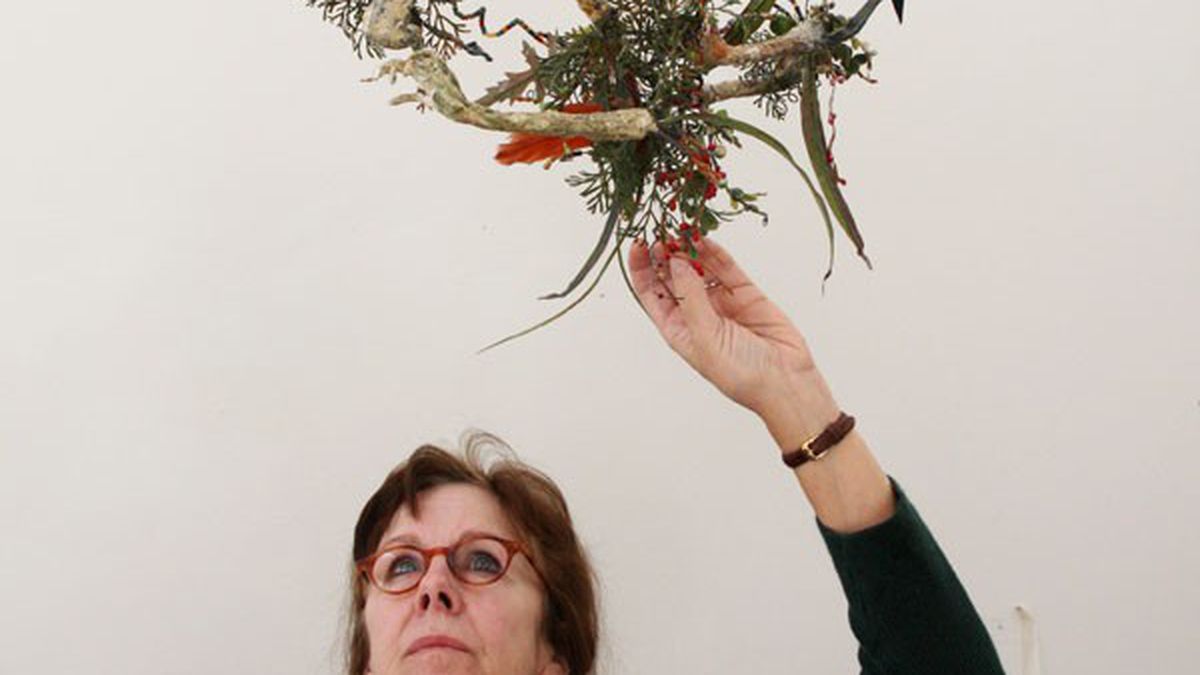Examining a huge banquet bowl that was more than 2,000 years old, Pamela Blotner found herself pondering not the vessel itself, but what it lacked. Which delicacies did it hold, back then? Who shared them?
Every year, an artist is invited to create a body of work inspired by the Graduate Theological Union’s Badè Museum of Biblical Archaeology (1798 Scenic Ave., Berkeley). With elegantly quirky sculptures in felt, wood, and other media, current artist-in-residence Blotner invites the ancestors to rejoin the feast. “Peering into morgue-like drawer after drawer of artifacts, I was immediately struck by what was not there, or was — in the case of cracked vessels, for instance — filled in by neutral white plaster,” she said. “The missing parts and the fillings of these ancient objects spoke both to archaeology as an act of faith and to the ongoing richness of the human imagination.” Her exhibition, “Mining the Collection: An Archaeology of the Senses,” opens with a reception at the museum on Thursday, April 8.
Excavated from a mound a few miles northwest of Jerusalem, the bulk of the museum’s collection comprises household goods from a provincial town that flourished from 1000 to 586 BCE. These lamps, pitchers, bowls, jars, jewelry, and cosmetic items are keys to a bygone approach to daily life in which the secular and spiritual were closely intertwined. “Belief was all around me, in sacred texts and objects,” Blotner mused. “How do we comprehend a lost civilization? And how can we use art to capture its essence? While archaeological science and historical scholarship help us reconstruct the purpose of artifacts, it is perhaps the artistic imagination — aided by the senses, the most basic building blocks of human understanding — that divines their meaning.
“Lovely, sensuous clay oil lamps sit in the museum’s display cases: lamps by which these ancient people saw,” she continued. “In other cases, wine and storage jugs stand, holding the essence of what they tasted. … I discovered worry beads” — which accounted for the sense of touch. “I was also shown rattles, which had been made to create music. Smell, considered to be the most ephemeral of the five senses, was harder.” Incense burners couldn’t tell the whole story, so Blotner asked museum administrators to describe odors that were common in the Middle East during the Iron Age.
This inspired one of the many pieces she created for her exhibition. Titled “What Remains,” it incorporates a clay replica of the last remaining chip of an ancient incense burner, fitted into a steel structure meant to resemble the computer-generated 3D “wire frames” that digital modelers use to build virtual forms.
“I put these elements together in such a way as to suggest both what archaeologists knew was,” said Blotner, “and what could be reconstructed with hope and science.” 5 p.m., free. Bade.PSR.edu












